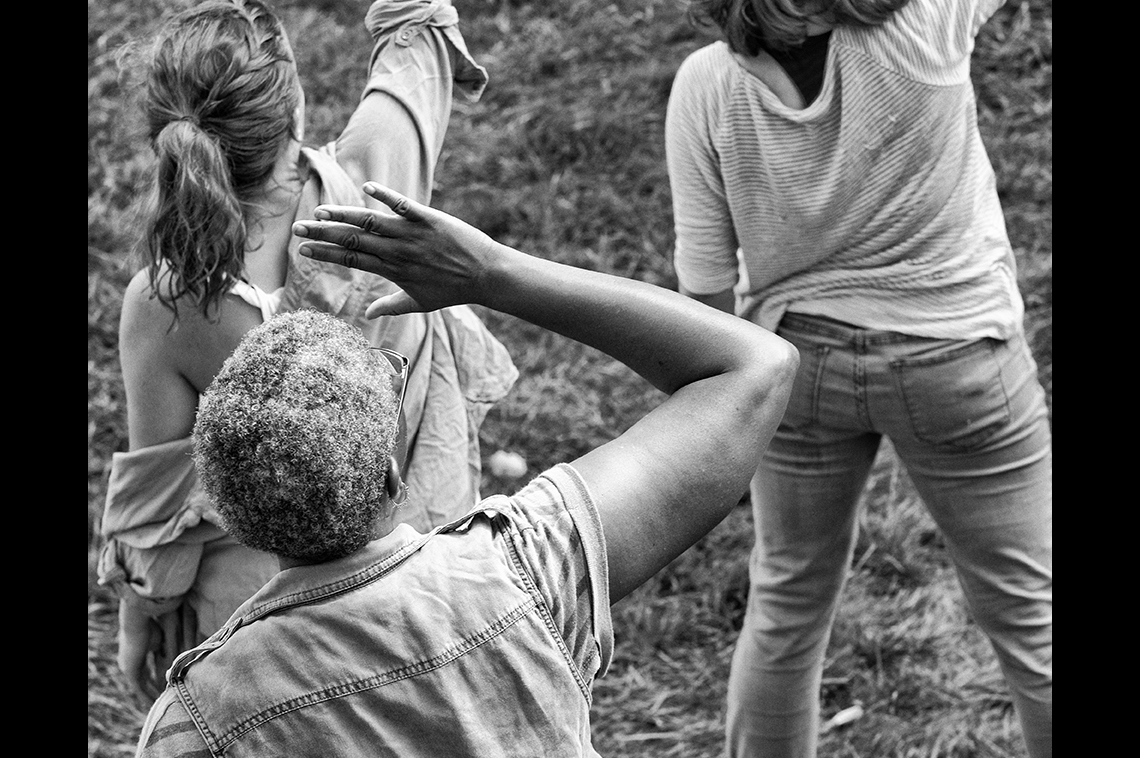
Takoma Park, Maryland, New Hampshire Avenue is a commercial and residential corridor that has long been hard to traverse due to its broad, busy roadways. This lack of walkability has hindered local human interactions and connections among residents. Though the area is culturally rich and remarkably racially diverse, its character is dominated not by the cultural vibrancy of its residents, but by this eight-lane traffic artery that primarily serves as a pass-through for commuters. Necessary infrastructure investments and new redevelopment opportunities designed to address this situation have manifested fears of displacement in the community.
Traveling and gathering
To address these issues, Dance Exchange, an internationally recognized contemporary dance company resident in Takoma Park since 1997, understood that the community needed spaces and opportunities for cohesive, intergenerational social interaction that reflected its enduring cultural elements and affirmed its values and aspirations. “New Hampshire Ave: This Is a Place To...” acknowledged the power of artmaking and performance to bring new meaning to the relationships between individuals, communities, and the places in which they live and work. The project approached local needs in two ways: a “traveling” strategy to encompass the length of the New Hampshire Avenue corridor and a “gathering” strategy to draw participants together at the project’s central green space. Among the unexpected outcomes of the project was a shift of focus toward building the capacity of city planners and local community members to cultivate and maintain more meaningful and reciprocal relationships with each other through artmaking and dialogue. Accordingly, Dance Exchange has worked with the City of Takoma Park to discover and articulate ways in which Liz Lerman’s Critical Response Process recognized method for giving and receiving feedback which originated at Dance Exchange, can inform a midstream urban planning process.
From schools to senior centers
The early, exploratory phases of the project included preliminary workshops at area schools, senior centers, and adult and teen institutes in an effort to bring a wider circle of creative community practitioners and teen leaders into engagement with area residents. As the project, advanced, pop-up events in green spaces built familiarity and relationships with residents; family workshops at the Rec Center focused on intergenerational movement and storytelling; and public artmaking events allowed partnering artists to engage with the people, stories, and experiences of New Hampshire Avenue. This process of iterative engaging and creating led to deeper relationships as well as richer practices and outcomes as the work progressed. Other project activities included a series of interviews and portrait sittings which ensured that the faces and experiences of people who live and work along the avenue had a presence in conversations about the past, present, and future of the place. To create cohesion between all project events, Dance Exchange designed and produced a group of colorful chairs inscribed with the project title which debuted at a one-day, participatory community festival in September 2014. These chairs have become not only the central image of the project but also a platform for community members to express their celebrations, challenges, needs, and goals for New Hampshire Avenue.
Intersection, journey, and legacy
Programming conducted within the scope of the Our Town project has set the stage for future activities taking place with support from ArtPlace America. These upcoming and recent project phases have brought Dance Exchange into collaboration with a range of local artists to create a series of multimedia artworks along New Hampshire Avenue, which appeared as an installation during a site-specific intergenerational performance in July 2015. The performance, created in collaboration with New Hampshire Avenue community members as well as participants in Dance Exchange’s 2015 Summer Institute, was in part a re-imagination of Liz Lerman’s landmark work, Still Crossing, and brought together artists, organizers, and community leaders to explore Dance Exchange tools and practices as related to creative placemaking. (CRP), an internationally. The themes of intersection, journey, and legacy inherent in the revisioning of Still Crossing provided a unique, collaborative forum for city planners and residents to have deeper conversations about the celebrations, challenges, needs, and goals of a re-envisioned New Hampshire Avenue. By contributing individual and collective stories to the project through dance, music, visual art, and storytelling, community members had the opportunity to connect in ways that transformed perceptions of self and other, fostered a deeper relationship between what was and what is, and advocated for the presence and importance of community faces and stories within city-driven development initiatives.
* This is shared with permission from the NEA book 'How to Do Creative Placemaking.' You can download the whole book free HERE.





